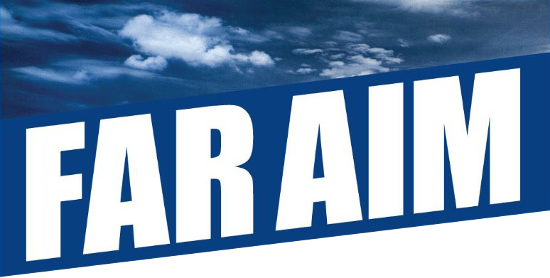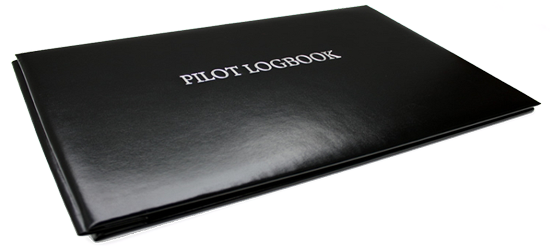Source: https://www.ecfr.gov/

61.123 : Eligibility requirements
To be eligible for a commercial pilot certificate, a person must:
- (a) Be at least 18 years of age;
- (b) Be able to read, speak, write, and understand the English language. If the applicant is unable to meet one of these requirements due to medical reasons, then the Administrator may place such operating limitations on that applicant’s pilot certificate as are necessary for the safe operation of the aircraft.
- (c) Receive a logbook endorsement from an authorized instructor who:
- Conducted the required ground training or reviewed the person’s home study on the aeronautical knowledge areas listed in §61.125 of this part that apply to the aircraft category and class rating sought; and
- Certified that the person is prepared for the required knowledge test that applies to the aircraft category and class rating sought.
- (d) Pass the required knowledge test on the aeronautical knowledge areas listed in §61.125 of this part;
- (e) Receive the required training and a logbook endorsement from an authorized instructor who:
- Conducted the training on the areas of operation listed in §61.127(b) of this part that apply to the aircraft category and class rating sought; and
- Certified that the person is prepared for the required practical test.
- (f) Meet the aeronautical experience requirements of this subpart that apply to the aircraft category and class rating sought before applying for the practical test;
- (g) Pass the required practical test on the areas of operation listed in §61.127(b) of this part that apply to the aircraft category and class rating sought;
- (h) Hold at least a private pilot certificate issued under this part or meet the requirements of §61.73; and
- (i) Comply with the sections of this part that apply to the aircraft category and class rating sought.

61.129 : Aeronautical experience
- (a) For an airplane single-engine rating. Except as provided in paragraph(i) of this section, a person who applies for a commercial pilot certificate with an airplane category and single-engine class rating must log at least 250 hours of flight time as a pilot that consists of at least:
- 100 hours in powered aircraft, of which 50 hours must be in airplanes.
- 100 hours of pilot-in-command flight time, which includes at least—
- (i) 50 hours in airplanes; and
- (ii) 50 hours in cross-country flight of which at least 10 hours must be in airplanes.
- 20 hours of training on the areas of operation listed in §61.127(b)(1) of this part that includes at least—
- (i) Ten hours of instrument training using a view-limiting device including attitude instrument flying, partial panel skills, recovery from unusual flight attitudes, and intercepting and tracking navigational systems. Five hours of the 10 hours required on instrument training must be in a single engine airplane;
- (ii) 10 hours of training in an airplane that has a retractable landing gear, flaps, and a controllable pitch propeller, or is turbine-powered, or for an applicant seeking a single-engine seaplane rating, 10 hours of training in a seaplane that has flaps and a controllable pitch propeller;
- (iii) One 2-hour cross country flight in a single engine airplane in daytime conditions that consists of a total straight-line distance of more than 100 nautical miles from the original point of departure;
- (iv) One 2-hour cross country flight in a single engine airplane in nighttime conditions that consists of a total straight-line distance of more than 100 nautical miles from the original point of departure; and
- (v) Three hours in a single-engine airplane with an authorized instructor in preparation for the practical test within the preceding 2 calendar months from the month of the test.
- Ten hours of solo flight time in a single engine airplane or 10 hours of flight time performing the duties of pilot in command in a single engine airplane with an authorized instructor on board (either of which may be credited towards the flight time requirement under paragraph (a)(2) of this section), on the areas of operation listed under §61.127(b)(1) that include—
- (i) One cross-country flight of not less than 300 nautical miles total distance, with landings at a minimum of three points, one of which is a straight-line distance of at least 250 nautical miles from the original departure point. However, if this requirement is being met in Hawaii, the longest segment need only have a straight-line distance of at least 150 nautical miles; and
- (ii) 5 hours in night VFR conditions with 10 takeoffs and 10 landings (with each landing involving a flight in the traffic pattern) at an airport with an operating control tower.
- (b) For an airplane multiengine rating. Except as provided in paragraph (i) of this section, a person who applies for a commercial pilot certificate with an airplane category and multiengine class rating must log at least 250 hours of flight time as a pilot that consists of at least:
- 100 hours in powered aircraft, of which 50 hours must be in airplanes.
- 100 hours of pilot-in-command flight time, which includes at least—
- (i) 50 hours in airplanes; and
- (ii) 50 hours in cross-country flight of which at least 10 hours must be in airplanes.
- 20 hours of training on the areas of operation listed in §61.127(b)(2) of this part that includes at least—
- (i) Ten hours of instrument training using a view-limiting device including attitude instrument flying, partial panel skills, recovery from unusual flight attitudes, and intercepting and tracking navigational systems. Five hours of the 10 hours required on instrument training must be in a multiengine airplane;
- (ii) 10 hours of training in a multiengine airplane that has a retractable landing gear, flaps, and controllable pitch propellers, or is turbine-powered, or for an applicant seeking a multiengine seaplane rating, 10 hours of training in a multiengine seaplane that has flaps and a controllable pitch propeller;
- (iii) One 2-hour cross country flight in a multiengine airplane in daytime conditions that consists of a total straight-line distance of more than 100 nautical miles from the original point of departure;
- (iv) One 2-hour cross country flight in a multiengine airplane in nighttime conditions that consists of a total straight-line distance of more than 100 nautical miles from the original point of departure; and
- (v) Three hours in a multiengine airplane with an authorized instructor in preparation for the practical test within the preceding 2 calendar months from the month of the test.
- 10 hours of solo flight time in a multiengine airplane or 10 hours of flight time performing the duties of pilot in command in a multiengine airplane with an authorized instructor (either of which may be credited towards the flight time requirement in paragraph (b)(2) of this section), on the areas of operation listed in §61.127(b)(2) of this part that includes at least—
- (i) One cross-country flight of not less than 300 nautical miles total distance with landings at a minimum of three points, one of which is a straight-line distance of at least 250 nautical miles from the original departure point. However, if this requirement is being met in Hawaii, the longest segment need only have a straight-line distance of at least 150 nautical miles; and
- (ii) 5 hours in night VFR conditions with 10 takeoffs and 10 landings (with each landing involving a flight with a traffic pattern) at an airport with an operating control tower.

61.133 : Commercial pilot privileges and limitations.
(a) Privileges.
- General. A person who holds a commercial pilot certificate may act as pilot in command of an aircraft—
- (i) Carrying persons or property for compensation or hire, provided the person is qualified in accordance with this part and with the applicable parts of this chapter that apply to the operation; and
- (ii) For compensation or hire, provided the person is qualified in accordance with this part and with the applicable parts of this chapter that apply to the operation.
(b) Limitations.
- A person who applies for a commercial pilot certificate with an airplane category or powered-lift category rating and does not hold an instrument rating in the same category and class will be issued a commercial pilot certificate that contains the limitation, “The carriage of passengers for hire in (airplanes) (powered-lifts) on cross-country flights in excess of 50 nautical miles or at night is prohibited.”
The limitation may be removed when the person satisfactorily accomplishes the requirements listed in §61.65 of this part for an instrument rating in the same category and class of aircraft listed on the person’s commercial pilot certificate.